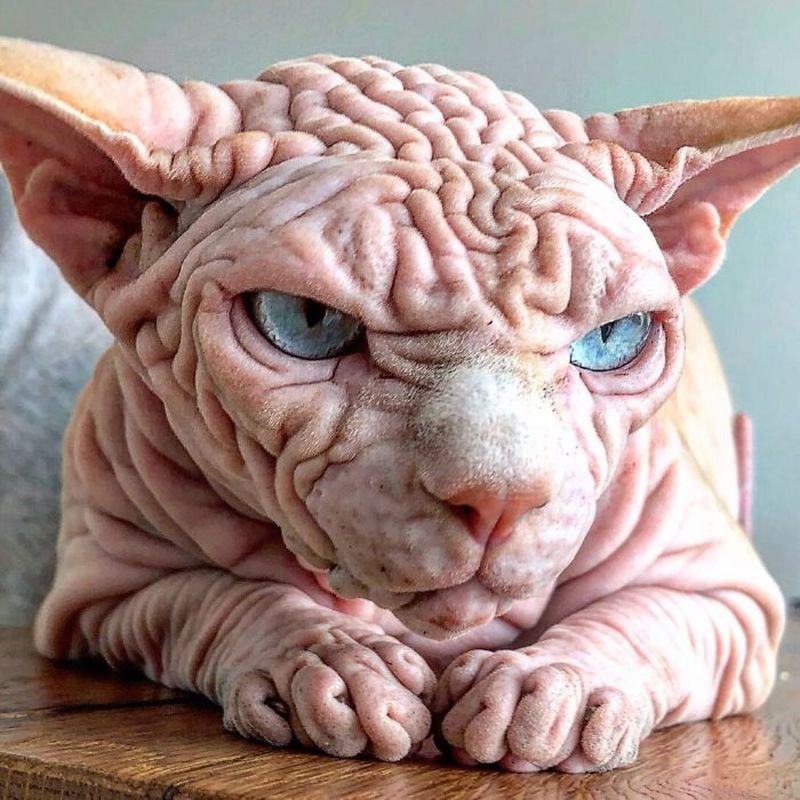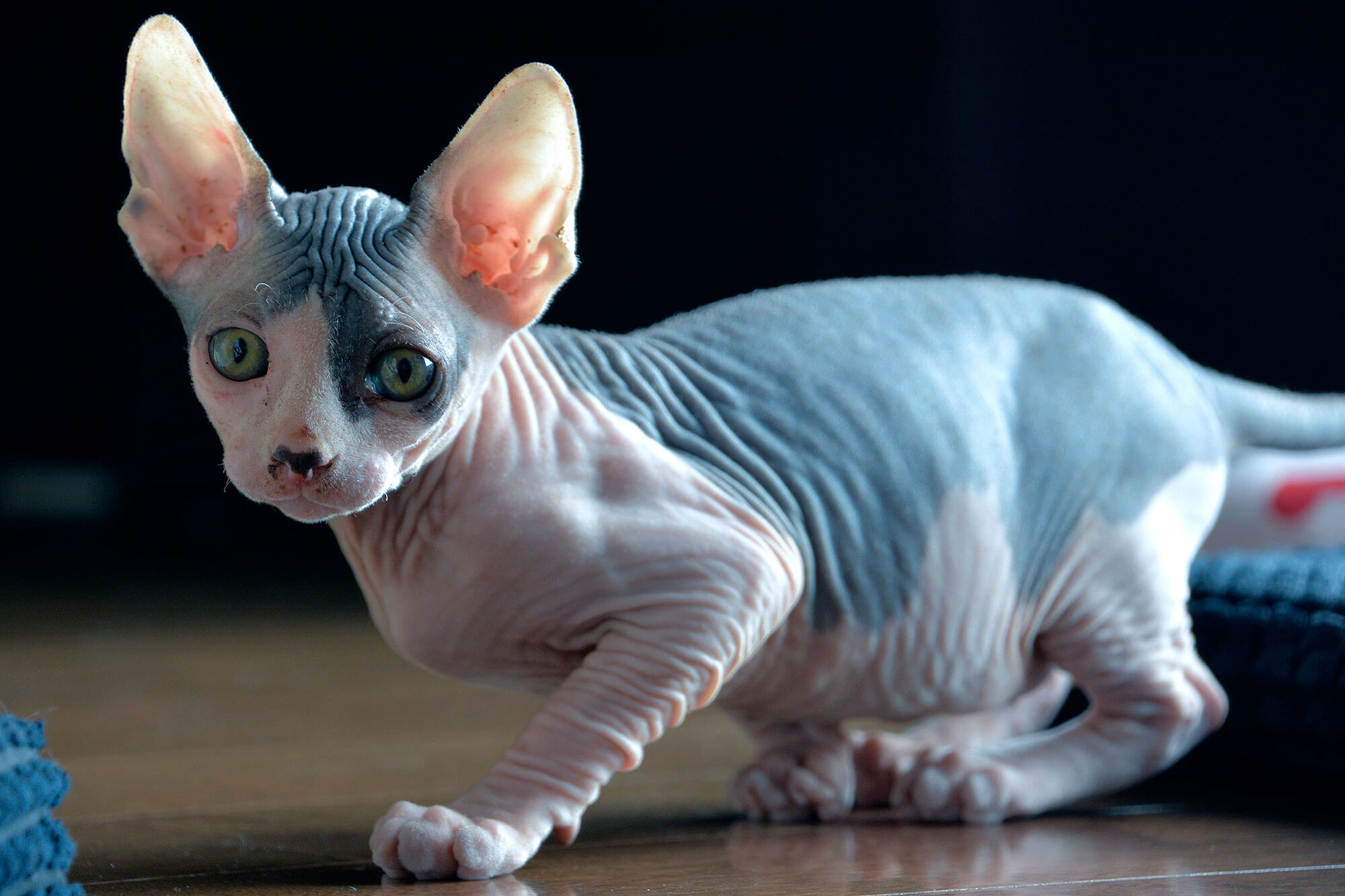Are Hairless Cats Greasy?

The distinctive appearance of hairless cat breeds, such as the Sphynx, Donskoy, and Peterbald, often sparks curiosity, with one of the most frequently posed questions concerning the texture and cleanliness of their skin. A common perception, and indeed a reality for many owners, is that these felines can feel notably greasy or oily to the touch. This characteristic is not a flaw or a sign of poor hygiene but rather a natural physiological outcome directly related to their unique genetic makeup and the absence of a traditional fur coat. Understanding the underlying mechanisms behind this phenomenon is crucial for providing appropriate care and appreciating the unique biology of these remarkable animals.
The Physiology of Feline Skin and Sebum Production
To comprehend why hairless cats exhibit a greasy feel, it is essential to first understand the fundamental functions of feline skin and its associated glands. The skin, the largest organ of the body, serves as a protective barrier against environmental threats, regulates body temperature, and houses sensory receptors. Embedded within the skin are various glands, including sebaceous glands. These glands are responsible for producing sebum, a complex oily and waxy substance composed of triglycerides, wax esters, squalene, and free fatty acids.
In all cats, sebum plays several vital roles. It acts as a natural moisturizer, keeping the skin supple and preventing dryness and cracking. Sebum also forms a protective layer on the skin’s surface, contributing to the skin’s barrier function against pathogens and environmental irritants. Furthermore, in haired cats, sebum coats the individual hair shafts, providing lubrication, waterproofing the fur, and contributing to the coat’s natural sheen. This distribution across the fur helps to wick away excess oil from the skin surface, making the skin beneath the coat feel relatively dry.
The Impact of Hairlessness on Sebum Management
The primary reason hairless cats often feel greasy lies in the absence of a dense fur coat to absorb and distribute the naturally produced sebum. While haired cats have millions of hair follicles that serve as conduits for sebum, allowing it to spread along the hair shafts and away from the skin, hairless breeds lack this extensive network. Their skin, though appearing bare, is typically covered in a fine downy fuzz, but this is insufficient to perform the same function as a full coat of fur.
Consequently, the sebum produced by the sebaceous glands in hairless cats accumulates directly on the skin’s surface. There is no substantial hair to wick it away, leading to a palpable oily residue. This accumulation can make the skin feel slick, tacky, or, indeed, greasy. The rate of sebum production is genetically determined and varies among individual cats, meaning some hairless cats will naturally produce more oil than others, leading to differing degrees of greasiness.
Contributing Factors to the Greasy Sensation
Beyond the fundamental lack of hair, several other factors contribute to the greasy sensation observed in hairless cats:
- Skin Folds and Wrinkles: Many hairless breeds, particularly the Sphynx, are characterized by their distinctive wrinkles and skin folds. These folds create crevices where sebum, dead skin cells, and environmental dirt can easily accumulate. The trapped mixture can become more concentrated and noticeable, contributing significantly to the overall greasy feeling and, if left uncleaned, can lead to skin irritation or even infections.
- Environmental Adherence: The oily film on a hairless cat’s skin acts as a magnet for dust, dander, and other airborne particles. These particles readily adhere to the skin, mixing with the sebum and creating a more visible and tactile layer of grime. This is why a hairless cat, even shortly after a bath, can quickly pick up environmental residue.
- Lack of Natural Exfoliation: In haired cats, the shedding process and the movement of hair shafts can contribute to a degree of natural exfoliation, helping to remove dead skin cells and some excess sebum. Without this mechanism, dead skin cells can remain on the surface, mixing with sebum and further contributing to the greasy texture.
- Ear Wax and Nail Bed Accumulation: The sebaceous glands are not confined to the general body skin. They are also present in the ears and around the nail beds. In hairless cats, the absence of hair within the ear canal means that ear wax (a combination of sebum and cerumen) can accumulate more visibly and rapidly, requiring frequent cleaning. Similarly, sebum can build up around and under the nails, necessitating regular nail care.
Not a Problem, But a Characteristic Requiring Specific Care
It is crucial to understand that the greasiness of hairless cats is not Straight Hair Hairstyles Women An Exploration Of Elegance And Versatility inherently a sign of poor health or a problem to be “fixed” in the sense of stopping sebum production. It is a natural physiological characteristic. However, managing this natural oiliness through a dedicated grooming routine is paramount for the cat’s health, comfort, and overall well-being.
Without regular care, the accumulated sebum can lead to several issues:
- Skin Irritation and Acne: Excess sebum can clog pores, leading to blackheads (comedones) and feline acne, particularly on the chin and tail.
- Bacterial and Yeast Infections: The warm, moist environment created by trapped sebum and dead skin cells in skin folds is an ideal breeding ground for bacteria and yeast, potentially leading to dermatitis or other skin infections.
- Unpleasant Odor: The breakdown of sebum by skin bacteria can produce a distinct, sometimes strong, odor.
- Discomfort: An excessively greasy or dirty cat may experience itching or general discomfort.
Therefore, understanding the reasons behind their unique skin texture empowers owners to provide the specialized care these fascinating felines require. This care ensures their skin remains healthy, clean, and comfortable, allowing their distinctive personalities to shine without the hindrance of skin issues. The commitment to this grooming routine is an integral part of responsible ownership for hairless cat breeds, transforming a perceived “greasiness” into a manageable aspect of their charm.
FAQs by are hairless cats greasy
Is the greasiness a sign of illness in hairless cats?
Typically, the natural oiliness of hairless cats is not an indication of illness; it is a normal physiological characteristic. However, any sudden, significant increase in oil production, accompanied by redness, irritation, itching, or an unusual odor, warrants veterinary consultation, as it could indicate an underlying skin condition or other health issue.
Do all hairless cat breeds exhibit the same level of greasiness?
No, the degree of oiliness can vary among individual cats, even within the same breed. Genetic factors, diet, and overall health can influence the amount of sebum produced. Some hairless cats may feel only slightly tacky, while others might have a more pronounced greasy texture.
Can a hairless cat’s diet influence its skin oiliness?
While diet can impact overall skin health, its direct influence on the inherent greasiness of a hairless cat is generally less significant than the genetic predisposition to sebum production and the absence of hair. A balanced, high-quality diet supports healthy skin, but it will not eliminate the natural sebum accumulation.
How often should a hairless cat be bathed to manage oiliness?
The ideal bathing frequency Short Hairstyles For Women Over Uk Over An Exploration Of Elegance And Practicality varies depending on the individual cat’s sebum production and lifestyle. Most hairless cats benefit from a bath every one to two weeks. Some may require more frequent bathing, while others might tolerate slightly longer intervals. Observation of the cat’s skin and consultation with a veterinarian are recommended to establish an appropriate routine.
Is it possible to stop a hairless cat from producing sebum?
No, sebum production is a natural and essential bodily function for skin health and protection. Attempting to stop it would be detrimental to the cat’s well-being. The goal of care is to manage the accumulation of sebum on the skin surface, not to halt its production.
Tips by are hairless cats greasy
Establishing a consistent and appropriate grooming routine is paramount for maintaining the health and comfort of hairless cats.
- Regular Bathing: Implement a bathing schedule, typically weekly or bi-weekly, using a veterinarian-recommended, cat-specific shampoo that is gentle and moisturizing. Thorough rinsing is crucial to prevent residue buildup.
- Skin Fold Cleaning: Pay meticulous attention to cleaning within the skin folds and wrinkles. Use a soft, damp cloth or specialized pet wipes to gently remove accumulated sebum, dirt, and dead skin cells. This prevents irritation and potential infections.
- Ear Cleaning: Due to the lack of hair in the ear canals, ear wax can accumulate rapidly. Clean the ears weekly with a vet-approved ear cleaner and cotton balls, avoiding cotton swabs deep within the canal.
- Nail Care: Sebum and debris can collect under and around the nails. Regular nail trimming and gentle cleaning of the nail beds are necessary to prevent buildup and maintain hygiene.
- Daily Spot Cleaning: Between baths, use soft, unscented pet wipes or a damp cloth for daily spot cleaning, especially on areas prone to oiliness like the chin, chest, and tail.
- Monitor Skin Health: Regularly inspect the cat’s skin for any signs of redness, irritation, blackheads, or unusual lesions. Early detection of skin issues allows for prompt veterinary intervention.
- Provide a Clean Environment: A clean living environment minimizes the amount of dust and dirt that can adhere to the cat’s oily skin, reducing the frequency of visible grime.
Conclusion by are hairless cats greasy
The inherent greasiness of hairless cat breeds is a direct consequence of their unique physiology, specifically the absence of a dense fur coat to absorb and distribute naturally produced sebum. This characteristic is not a defect but a fundamental aspect of their biology, necessitating a dedicated and informed approach to their care. Understanding the reasons behind their oily skin empowers owners to implement appropriate grooming routines, which are vital for preventing skin issues, maintaining hygiene, and ensuring the cat’s comfort and well-being. The commitment to these specialized care practices transforms the management of their unique skin into a rewarding aspect of cohabitation, allowing these distinctive felines to thrive and display their charming personalities.





:strip_icc()/GettyImages-528925876-4825447db4524262b9f12772725cdba7.jpg)

More suggestion: Best Party Hairstyles For Short Hair Elevating Your Celebration Look